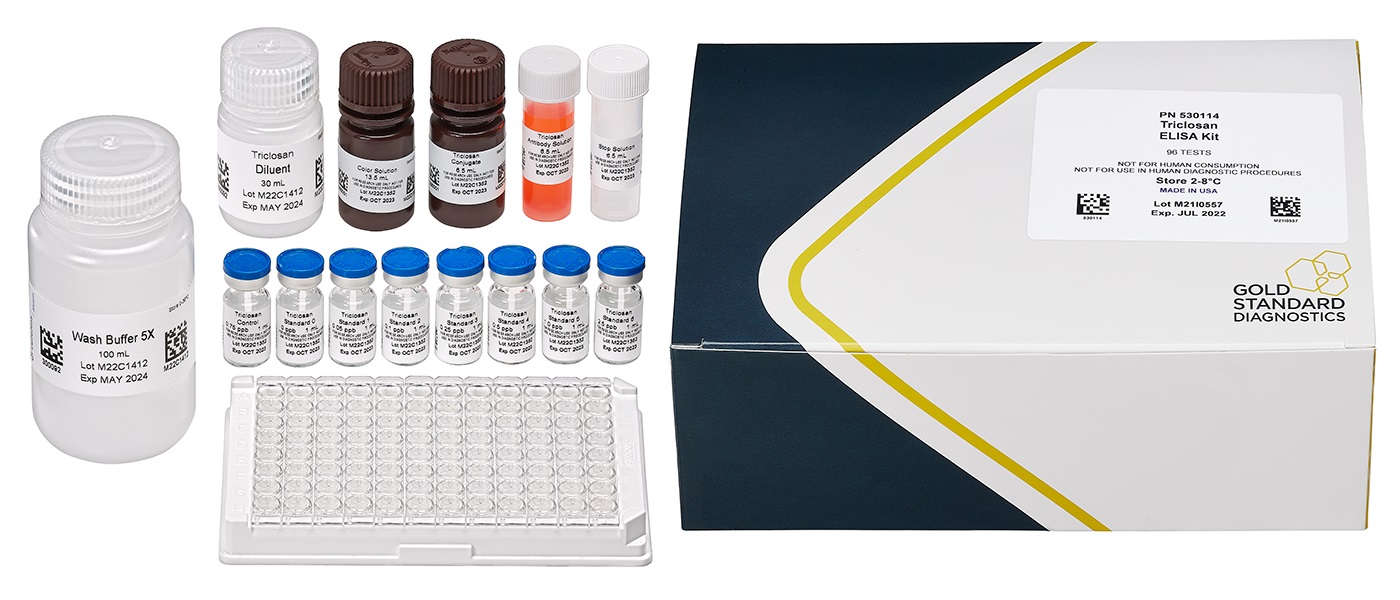ABRAXIS® Triclosan, ELISA, 96-test
Request InfoImmunoassay for detection of Triclosan and Triclosan methyl. Please refer to the specific procedures for water (groundwater, surface water, well water, effluent), and soil. Application procedures for other sample matrices can be obtained from Gold Standard Diagnostics. The Triclosan Microtiter Plate Kit applies the principles of enzyme linked immunosorbent assay (ELISA) to the determination of Triclosan. In the assay system, standards, controls, or samples are added, along with an antibody specific to Triclosan, to microtiter wells coated with Goat Anti-Rabbit Antibody and incubated for thirty (30) minutes. The Triclosan enzyme conjugate is then added. At this point, a competitive reaction occurs between the Triclosan, which may be in the sample, and the enzyme-labeled Triclosan analog for the antibody binding sites on the microtiter well. The reaction is allowed to continue for thirty (30) minutes. After a washing step, the presence of Triclosan is detected by adding the Color Solution, which contains the enzyme substrate (hydrogen peroxide) and the chromogen (3,3?,5,5?-tetramethylbenzidine). The enzyme-labeled Triclosan bound to the Triclosan antibody catalyzes the conversion of the substrate/chromogen mixture to a colored product. The color reaction is stopped and stabilized after a twenty (20) minute incubation period by the addition of diluted acid (stopping solution). The color is then evaluated using an ELISA reader. A dose response curve of absorbance vs. concentration is generated using results obtained from the standards. The concentration of Triclosan present in the control and samples is determined directly from this curve. Since the labeled Triclosan (conjugate) was in competition with the unlabeled Triclosan (sample) for the antibody sites, the intensity of the color developed is inversely proportional to the concentration of Triclosan present in the sample.
PN 530114
Made to Order - Minimum Order Quantity 5 Kits
Format: 96-Well Plate ELISA
Images

